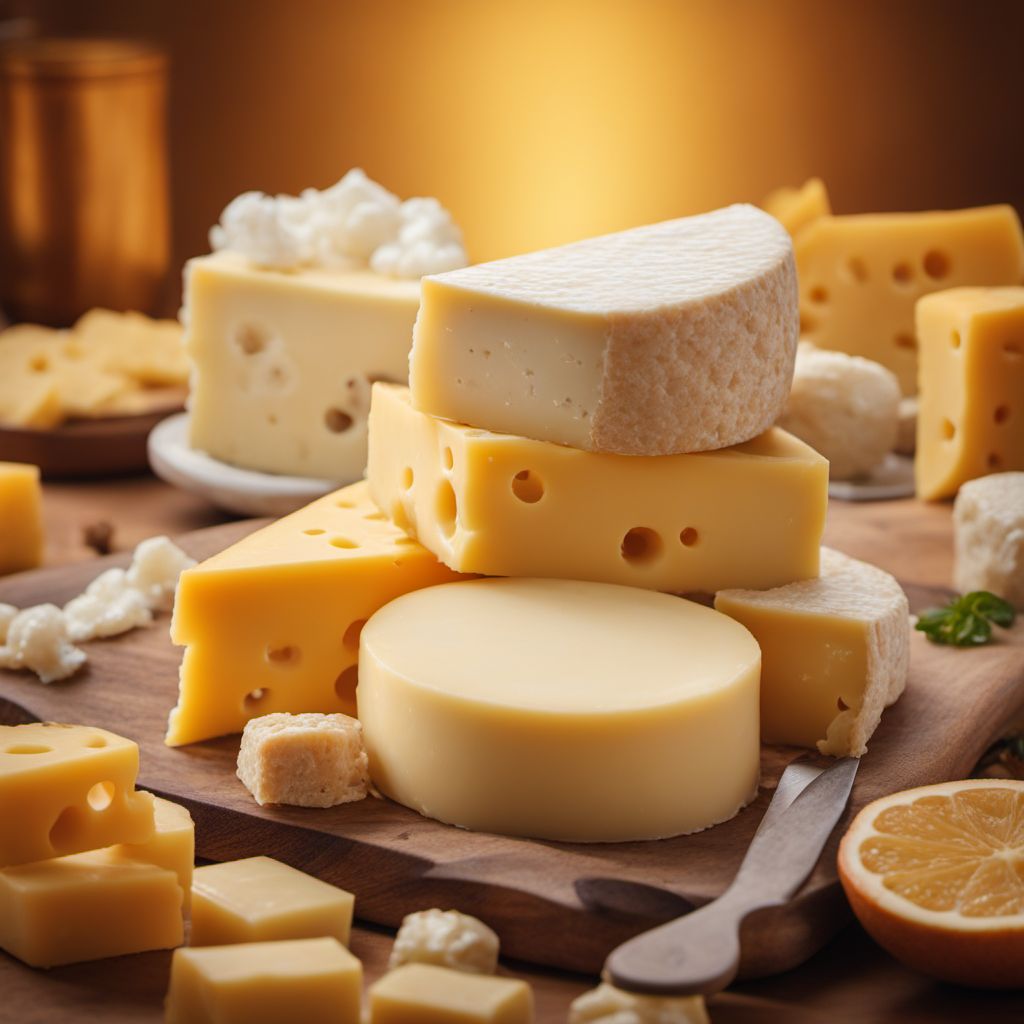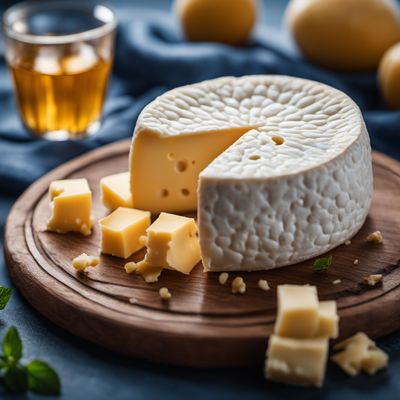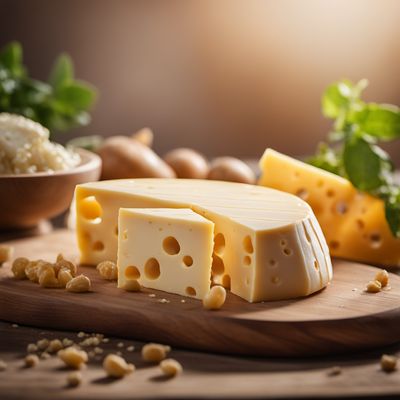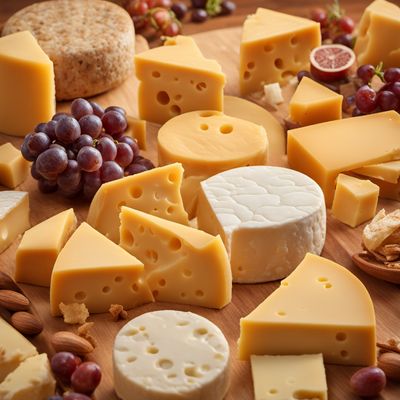
Ingredient
Cheese, cabrales
Cabrales Cheese: A Bold and Creamy Delight
Cabrales cheese is characterized by its strong, tangy flavor with hints of spice and a creamy, crumbly texture. It has a distinct blue-green marbled appearance, thanks to the presence of Penicillium molds. This artisanal cheese is typically aged in natural caves, allowing it to develop its complex flavors and aromas.
Origins and history
Cabrales cheese has a rich history dating back to the 19th century in the Asturias region of Spain. It is believed to have been influenced by French Roquefort cheese-making techniques brought by shepherds returning from their seasonal migrations. Today, Cabrales cheese is still produced using traditional methods, including the use of raw cow's, sheep's, or goat's milk. It holds a Protected Designation of Origin (PDO) status, ensuring its authenticity and quality.
Nutritional information
Cabrales cheese is a good source of calcium, protein, and vitamin B12. It is also relatively high in fat and sodium, so moderation is key. A 1-ounce (28g) serving of Cabrales cheese provides approximately 110 calories.
Allergens
Cabrales cheese may contain allergens such as milk and dairy products.
How to select
When selecting Cabrales cheese, look for a cheese that is firm but slightly crumbly. It should have a strong, pungent aroma and a marbled appearance with blue-green veins. Avoid cheeses that appear overly dry or have an ammonia-like smell.
Storage recommendations
To maintain the freshness and quality of Cabrales cheese, it is best stored in the refrigerator. Wrap it tightly in wax paper or aluminum foil to prevent it from drying out or absorbing odors from other foods. It is recommended to consume the cheese within a few weeks of purchase for optimal flavor.
How to produce
Cabrales cheese is typically produced by skilled artisans using traditional methods in the Asturias region of Spain. However, amateur cheese enthusiasts can try their hand at making similar blue cheeses using cow's, sheep's, or goat's milk and specific cheese cultures and molds.
Preparation tips
Cabrales cheese is a versatile ingredient that can be enjoyed on its own, crumbled over salads, melted into sauces, or used as a flavorful addition to various dishes. It pairs well with fruits, nuts, and honey, and is often featured in traditional Spanish recipes such as Asturian bean stew and Cabrales cheese sauce for grilled meats.
Culinary uses
Cabrales cheese is commonly used in Spanish cuisine, particularly in the Asturias region. It is a key ingredient in dishes like Fabada Asturiana (Asturian bean stew), Cabrales cheese croquettes, and Cabrales cheese empanadas. It is also popular as a topping for grilled meats and in sandwiches.
Availability
Cabrales cheese is primarily available in Spain, particularly in the Asturias region where it is produced. It can also be found in specialty cheese shops and gourmet food stores worldwide.
More ingredients from this category

Cheese, bleu d'auvergne
The Blue Elegance

Cheese, roquefort
The Blue Elegance

Cheese, shropshire blue
The Bold and Tangy Delight: Shropshire Blue Cheese

Cheese, monje picon
The Fiery Spanish Delight

Cheese, fourme d'ambert
The Blue Jewel of French Cheeses

Cheese, stilton
The Blue Jewel of British Cheeses

Cheese, gamonedo
Gamonedo: The Spanish Delicacy

Cheese, valdeon
The Bold and Blue: Valdeon Cheese

Cheese, gorgonzola
The Bold and Creamy Delight: Gorgonzola Cheese

Cheese, bleu de gex
"The Savory Delight: Unveiling the Secrets of Bleu de Gex Cheese"
